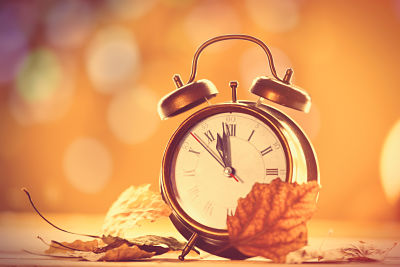Why Do Our Clocks “Spring Forward” and “Fall Back”? Why We Still Change the Clocks
Twice a year, when the flowers start to bloom and when the leaves start to fall, we dutifully wind our clocks back or forth an hour. Everyone knows about it, and nearly everyone gets frustrated about it. But, after a day or two of adjusting to the slightly different timescale, most of us forget about it and get on with our lives. So, what exactly is the deal with daylight saving time, and in a nation that works all odd hours of the day, why do we still observe it?
The History of Daylight Savings Time
While it’s true that the concept of daylight saving time, as we know it, started in modern times, people have been changing their schedules based on the seasons for as long as we can tell. For instance, there’s evidence that the Romans even used varying lengths of hours depending on whether it was winter or summer.
However, the DST that we know was actually the idea of a New Zealander named George Hudson, who first announced the idea back in 1895. It didn’t catch on immediately though, and it wasn’t until the early 1900s that the United Kingdom adopted the practice. While the United States observed DST during the two major wars, DST wasn’t a regular occurrence until the energy crisis of the 1970s.
 How the World Observes DST
How the World Observes DST
You might not know it, but Daylight Savings Time isn’t observed across the world. While North America and Europe observe the phenomenon, few counties outside of those continents do, besides a handful in the Middle East and some scattered throughout the rest of the globe. Thankfully, due to modern technology that auto-updates clocks, businesses and governments are able to adapt to the standards of other countries.
What might really surprise you is that, in fact, DST isn’t even observed regularly across the United States. Currently, Arizona is the only holdout state, disregarding the extra hour of sunlight because that would mean more money spent on air conditioning. However, other states like California and Alaska have brought up the issue and may soon introduce legislation to appeal the observance.
Why Do We Still Need It?
While many citizens have spent their entire lives practicing daylight saving time, as you can see, the United States doesn’t have a long history with the observance. Besides the obvious disadvantage of the confusion caused by setting clocks forward and backward, critics of DST have noted that shifting sleep patterns increases the risk of heart attack.
But despite the naysayers, there’s still a lot of good to DST. Not only does it give us more time in the evening to enjoy the sunlight of the outdoors, but it also improves safety on the roads after work. Research has also shown that DST benefits companies, especially retailers. Also, it’s become common practice to check smoke detectors and review fire safety procedures twice a year in accordance with the DST changes.
It’s tough to say whether DST will continue to stick around, and as some states move to get rid of the observance, we may see others follow suit. While technology has made it easier to deal with the changes, there’s no arguing against the effects the changing hours have on our sleep, which may end up being the biggest factor of all. For now though, we’ll just have to keep repeating that old saying to ourselves: “spring forward, fall back.”








